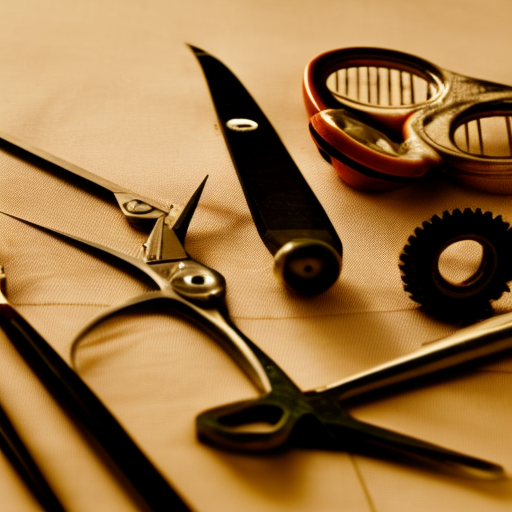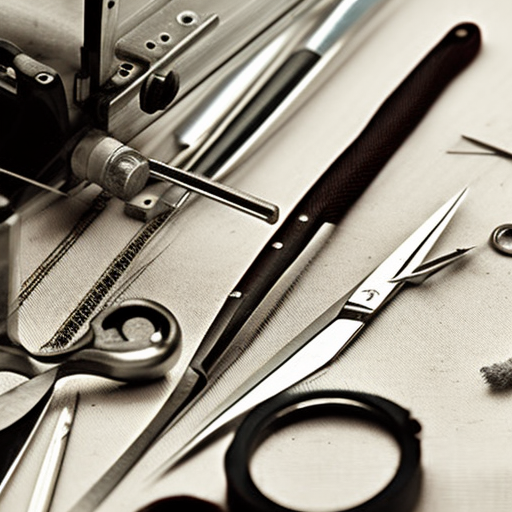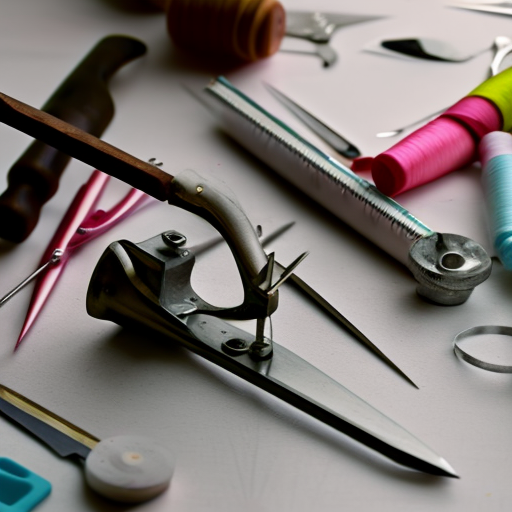How Sewing Tools and Materials Are Classified
Are you new to the art of sewing? Have you ever walked into a sewing supplies store and became overwhelmed by the vast array of tools and materials? Fear not! In this article, we will discuss how sewing tools and materials are classified, making it easier for you to navigate through your next shopping trip.
Sewing Tools
Sewing tools are essential for any sewing project. They come in various shapes, sizes, and functions, and each one plays a specific role in the sewing process. Sewing tools can be classified into three main categories: measuring tools, cutting tools, and marking tools.
Measuring Tools
Measuring tools are used to ensure accuracy and precision in your sewing projects. They include:
- Measuring tapes: Used to take body measurements and fabric measurements.
- Rulers: Used for marking and measuring straight lines and edges.
- Curved rulers: Used for drawing curves and creating patterns.
- French curve: A curved ruler with different shapes and sizes, ideal for making armholes, necklines, and curves in garments.
Cutting Tools
Cutting tools are used to transform the fabric into the desired shape and size. They include:
- Scissors: A must-have for every sewist. They come in different types and sizes, including fabric scissors, shears, and embroidery scissors.
- Rotary cutter: Used to cut fabric in a straight line efficiently. It consists of a blade attached to a handle and is perfect for quilting projects.
- Seam ripper: Used to remove stitches and to fix mistakes.
Marking Tools
Marking tools are used to transfer patterns, darts, and other design elements onto the fabric. They include:
- Dressmaker’s chalk: Used to mark fabric temporarily. It comes in different colors and can be easily brushed or washed off.
- Dressmaker’s carbon paper: Used to transfer patterns onto the fabric.
- Tracing wheel: Used with dressmaker’s carbon paper to transfer markings onto the fabric.
- Pen and pencil: Used to transfer markings permanently onto the fabric.
Sewing Materials
Sewing materials refer to any fabric, thread, or embellishment used in a sewing project. They can be classified into five main categories: fabric, thread, needles, fasteners, and embellishments.
Fabric
Fabric is the foundation of every sewing project, and it comes in various types, such as cotton, silk, linen, and wool. It is classified based on its weight, weave, content, and purpose. Choosing the right fabric for your project depends on its drape, durability, and suitability for the garment’s design.
Thread
Thread is used to stitch fabric pieces together. It is classified based on its weight, material, and purpose. The most commonly used threads for sewing are polyester and cotton, while nylon and silk are used for more delicate fabrics.
Needles
Needles are used to sew the fabric pieces together with the thread. They are classified based on the type of stitch they create, the fabric they are suited for, and the size. The most commonly used needles are universal and sharp needles.
Fasteners
Fasteners are used to secure garment openings, such as zippers, buttons, and snaps. They are classified based on their style, function, and placement. For example, buttons can be decorative, while zippers are used for functional purposes.
Embellishments
Embellishments are used to add a touch of personality and creativity to a sewing project. They include trims, ribbons, lace, and beads. They are classified based on their style, material, and usage.
Now that you know how sewing tools and materials are classified, you can confidently walk into a sewing supplies store and choose the right tools and materials for your next project. Remember, the key to successful sewing is using the right tools and high-quality materials. Happy sewing!





Knowledge is power!
Kurt Gray: Love to learn more about this!
This is a great topic to learn about! Knowing how different tools and materials are classified is a great way to streamline sewing projects to get the best results.